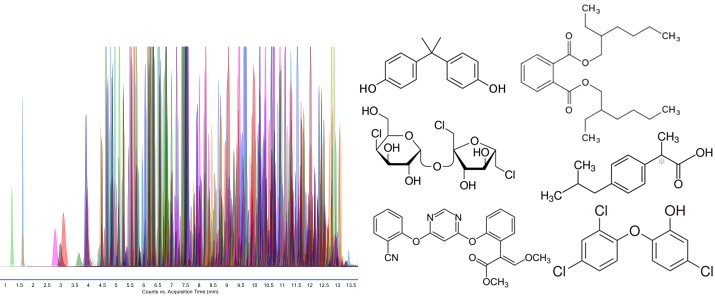Research
The overarching goal of our lab is to better understand the health effects of environmental exposure, with the current emphasis being placed on microbiome research. We aim to answer how gut microbiome interacts with environmental exposure, how gut microbiome affects disease susceptibility, and how host factors crosstalk with microbiome response to chemicals. Another line of our research is to map exposome in humans, with the goals of documenting all possible exposure over the lifespan, understanding the health impact of the exposome, and applying the knowledge to improve the public health. Our lab is also working on developing biomarkers for environmental exposure and human diseases, such as DNA and protein adducts. Consequently, we used highly integrated system-level approaches combining DNA sequencing, metabolomics, proteomics and lipidomics, coupled with the use of diverse cell types, animal and disease models to address these challenges. A few typical research projects are briefly described as below.
Integrated Biology to Probe Functional Interactions between Microbiome and Exposure and Human Disease
Microbiome has a profound effect on human health through its key role in a wide range of host-related functions, ranging from metabolic processing to immune cell development. Accumulating evidence has indicated that dysregulated microbiome contributes in a significant way to a variety of human diseases. We are developing an integrated biology approach to characterize and understand the complex interactions between the microbiome community and environmental exposure, as well as human disease. We focus on heavy metals, pesticides, artificial sweeteners, and other compounds of public health significance.

System-level Omics to Understand Health Effects of Environmental Exposure and Human Disease
We are developing and applying Omics-based systems-level approaches, including metabolomics, proteomics and lipidomics, to investigate the biological consequences of environmental exposure and human disease at the molecular level. A large inventory of altered biomolecules revealed by Omics would provide key insights into the metabolic and other signaling pathways associated with exposure/disease and yield an unprecedented boon of molecular information critical to understanding responses at both the individual and population level. We are interested in maternal exposure, children health and chronic inflammation such as inflammatory bowel disease.

Targeted and Non-targeted Metabolomics / Exposomics to Define Endogenous and Exogenous Human Exposure
We have been developing targeted and non-targeted mass spectrometry based sensitive methods to measure diverse metabolites and environmental chemicals to better define exposome in humans. We have used sensitive methods to measure environmental chemicals, such as phthalates, pesticides and their metabolites, BPa and its analogs, antimicrobials and preservatives, other endocrine disruptors, drugs, and artificial sweeteners. Likewise, we also use non-targeted high-resolution mass spectrometry-based metabolomics and exposomics to characterize human exposure in a number of biological samples. 
Biomarker Development for Environmental Toxicants and Oxidative/Nitrosative Stress
We have a successful history on developing chemical specific biomarkers to understand the toxicological consequence of environmental exposure and to improve science-based risk assessment. The emphasis is given to characterize and quantify chemical-induced DNA and protein damage as biomarkers using mass spectrometry. We are also developing biomarkers for oxidative stress that is associated with exposure to numerous environmental agents, such as formaldehyde, acetaldehyde, and a variety of human diseases, with the research focus on developing less- or non-invasive biomarkers in biological matrices.

Intervention Strategies for Cancer Prevention and Exposure-induced Disease via modulating microbiome and inflammatory signaling
We have strong interest of conducting our research in a highly translational manner by developing suitable intervention strategies to reduce environmental exposure-induced disease and human disease/cancer through improving our understanding of mechanisms of disease pathogenesis. Initial research effort is placed on developing approaches to attenuate or inhibit chronic inflammation in animal models with compounds and metabolites that suppress inflammatory signaling pathways.


